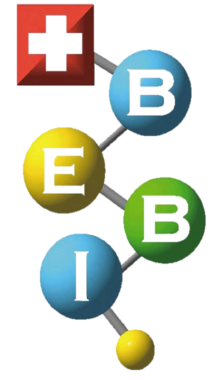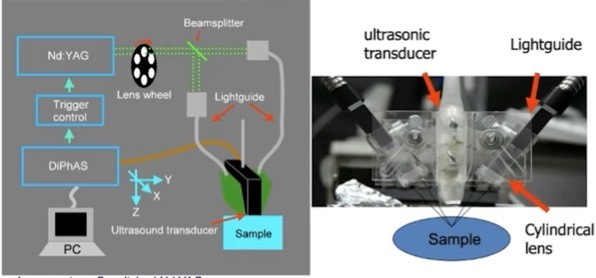With the advancement of science and technology, various diseases’ diagnosis and treatment techniques are also constantly improving. In different imaging diagnostic techniques, ultrasound and optical imaging are the two main methods. According to the information provided by the image, it can divide into morphological imaging, functional imaging, and molecular imaging technology. One of the research fields of Professor Li Pai-Chi of the Institute is the combination of acoustic and optical detection technology, called photoacoustic imaging technology. The basic principle is to irradiate the target with a laser, and different tissues have different light absorption rates. The parts with more vital absorption rates will generate detectable ultrasonic signals through the deformation caused by thermal expansion. When ultrasonic imaging technology is used for detection, target, and non-target tissue can be distinguished. This technology happens to combine the advantages of light and sound waves: generally speaking, the contrast of optics is better, while the scattering of sound waves is weaker and the penetration is better, so in recent years, photoacoustic imaging technology has gradually gained attention, and in Bioassays are beginning to play an important role.
In February 2021, Professor Li Baiqi’s team published a study on Biomedical Optics Express using photoacoustic imaging technology to perform 3D image reduction and calcium ion concentration measurement of tumor cells. In addition to imaging, Prof. Li also focuses on targeted therapy. Using the cavitation effect produced by ultrasound in the body, that is, the sound wave generates air bubbles (or other air bubbles) in human soft tissues, and Accompanying the process of sound wave imaging of bubbles, these micro-bubbles are used to coat the nano-probe and transport it to the target position, and then use the corresponding absorbed laser to heat the nanoparticles so that the affected area can be accurately heated. To sum up, the photoacoustic system has a variety of applications in biomedicine. What’s more, it can also solve the current bottlenecks encountered in medical treatment.
研究主題-光與聲在生物醫學的應用
撰寫:學生陳冠彬
隨著科技的進步,各種疾病的診斷與治療技術也在不斷精進。在各種影像診斷技術上,超音波影像與光學影像是其中兩種主要技術。而依照影像所提供之資訊來分類,則又可分為型態影像、功能影像、以及分子影像技術。本所的李百祺教授所研究的領域之一正是結合了聲學以及光學兩種檢測技術,稱作光聲影像 技術(photoacoustic imaging)。其基本原理是藉由雷射去照射目標物,而不同的組織所擁有的光吸收率不同,吸收率較強的部分會藉由熱膨脹產生之形變而產生可偵測到之超音波訊號,所以再用超音波影像技術去進行檢測時,就可以明確地分辨目標與非目標組織。這個技術恰巧結合了光與聲兩種波的優點:因為一般來說光學的對比度較佳,而聲波的散射較弱且穿透度較佳,因此近年來光聲影像技術逐漸獲得重視,且在生物檢測上開始扮演著重要的角色。
在2021年的二月份,李百祺教授的團隊在Biomedical Optics Express上發布的研究中,就是利用了光聲影像技術來進行腫瘤細胞的3D影像還原與鈣離子濃度測量。除了成像技術之外,李教授更把研究焦點投注在靶向治療領域,利用超音波在體內產生的穴蝕效應(cavitation ),也就是聲波在人體軟組織中產生氣泡(或是外加之氣泡)以及伴隨而來氣泡受到聲波影像的過程,利用這些微氣泡來包覆奈米探針,並輸送至標靶位置,再利用相對應吸收的雷射加熱奈米粒子,就可以精準的對患部進行熱治療。綜上所述,李教授團隊所掌握的光聲系統,在生物醫療上有著多變的應用,更可以去解決目前醫療上所遇到的瓶頸。

